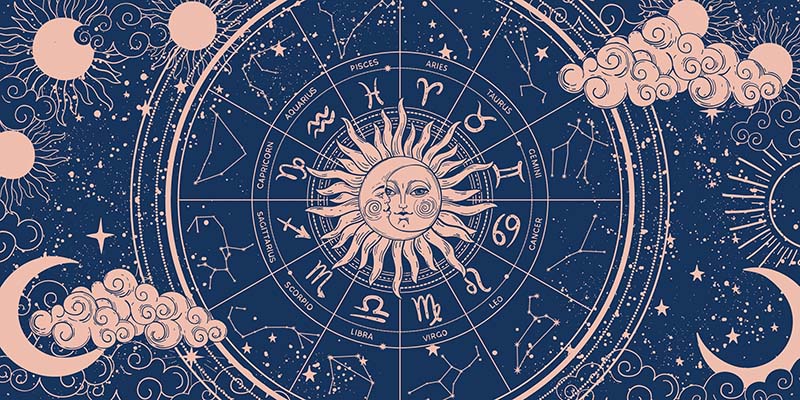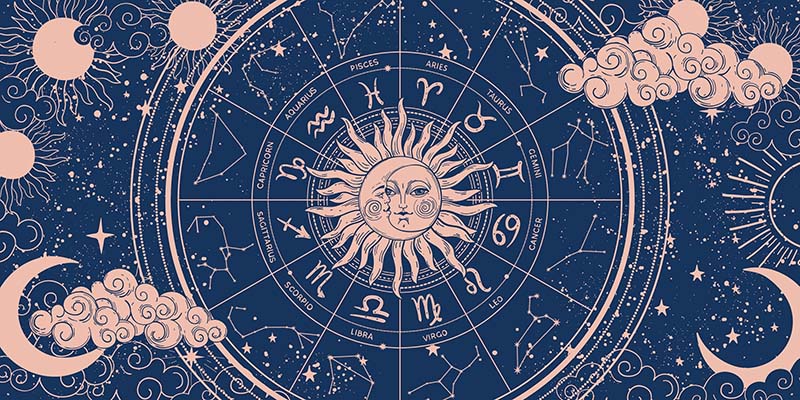
October 06, 2025
Uncategorized
4 min read
Astrology
Astrology is not just the study of planets and stars — it is an ancient science that reveals the rhythm of life.
It shows how cosmic energies influence our thoughts, emotions, and choices.
Each planet carries a message — not to change our destiny, but to help us understand it better.
Astrology is the art of self-awareness, guiding us to find balance amid life’s ups and downs.
Astrology: Bridging Ancient Wisdom and Modern Science
---
Introduction
Astrology is one of the oldest systems of understanding the influence of celestial bodies on
human life, dating back thousands of years. In Sanatan Dharma, astrology (Jyotish) is
considered a branch of the Vedas, often called the “eye of the Vedas”, guiding humans in
understanding time, nature, and destiny.
While often seen as mystical or symbolic, modern studies and observations reveal that astrology
incorporates astronomical accuracy, planetary cycles, and environmental effects, some of which
have surprising scientific correlations.
---
1. Astronomy Behind Astrology
Astrology relies on precise positions of planets, Sun, Moon, and stars.
Ancient astronomers like Aryabhata, Varahamihira, and Bhaskaracharya calculated planetary
motions with remarkable accuracy.
Uncommon knowledge: Many horoscopes account for the precession of equinoxes, which
modern astronomy confirms, showing that ancient astrologers observed long-term celestial
shifts.
---
2. Lunar Influence on Humans
Astrology emphasizes the Moon’s position, reflecting its influence on moods, emotions, and
mental states.
Modern science confirms that lunar cycles affect sleep patterns, hormonal cycles, and circadian
rhythms.
Uncommon fact: The synchronization of menstrual cycles in groups, historically linked to lunar
phases, shows ancient awareness of Moon’s subtle influence on biology.
---
3. Planetary Alignments and Environmental Effects
Jyotish texts describe how planetary conjunctions (yogas) and eclipses influence weather,
agriculture, and human affairs.
Science confirms that solar and lunar eclipses, planetary gravitational forces, and solar cycles
impact tides, rainfall patterns, and geomagnetic activity.
Lesser-known insight: Traditional astrology observed these correlations empirically, guiding
farming and social planning.
---
4. Astrology and Psychology
Astrological charts emphasize traits based on planetary positions at birth (Janma Kundali).
Modern psychology recognizes that birth season, light exposure, and environmental conditions
at birth can influence personality, temperament, and circadian rhythms.
Uncommon fact: Studies show slight correlations between month of birth and certain traits,
echoing observations encoded in astrology.
---
5. Timing and Muhurat (Auspicious Times)
Astrology dictates muhurtas for marriages, surgeries, and important ventures.
Science explains this partially through lunar phases, tides, and solar cycles, which can subtly
affect human physiology, fertility, and even mood.
Uncommon knowledge: Choosing timing based on astrology may align activities with circadian
and environmental rhythms, optimizing success.
---
6. Zodiac Signs and Seasonal Effects
Zodiac signs in Jyotish correlate with seasons and natural cycles.
For example, Aries (Mesh) aligns with spring, representing renewal; Scorpio (Vrishchik) aligns
with post-monsoon cycles, symbolizing transformation.
Modern environmental science confirms that seasonal changes influence human biology,
behavior, and mood, partially validating ancient zodiac wisdom.
---
7. Astrology and Health
Ayurveda and astrology were historically intertwined, prescribing health routines based on
planetary positions.
Uncommon insight: Some astrological recommendations align with light exposure, vitamin D
synthesis, and seasonal nutrition, supporting preventive health.
---
8. Astrology as a Tool for Human Insight
Beyond predictions, astrology serves as a psychological framework, helping individuals reflect
on life, understand patterns, and plan activities.
Studies in narrative psychology show that astrology provides structure and meaning, reducing
stress and promoting mental well-being.
---
9. Eclipses and Solar/Lunar Effects
Ancient texts describe eclipses as powerful events influencing life and environment.
Modern science shows solar and lunar eclipses affect animal behavior, tides, and geomagnetic
activity, corroborating observational insights from astrology.
Uncommon knowledge: Some ancient rituals performed during eclipses likely helped community
awareness and preparation for natural changes.
---
Conclusion
Astrology in Sanatan Dharma is more than superstition; it is a system deeply rooted in
astronomy, environmental observation, and human psychology. Many practices, timings, and
interpretations reflect empirical knowledge of celestial effects on Earth and humans.
While astrology is symbolic and interpretative, modern science confirms that celestial events,
lunar cycles, and planetary positions do influence biology, environment, and human behavior,
bridging ancient wisdom and contemporary understanding.
---
Introduction
Astrology is one of the oldest systems of understanding the influence of celestial bodies on
human life, dating back thousands of years. In Sanatan Dharma, astrology (Jyotish) is
considered a branch of the Vedas, often called the “eye of the Vedas”, guiding humans in
understanding time, nature, and destiny.
While often seen as mystical or symbolic, modern studies and observations reveal that astrology
incorporates astronomical accuracy, planetary cycles, and environmental effects, some of which
have surprising scientific correlations.
---
1. Astronomy Behind Astrology
Astrology relies on precise positions of planets, Sun, Moon, and stars.
Ancient astronomers like Aryabhata, Varahamihira, and Bhaskaracharya calculated planetary
motions with remarkable accuracy.
Uncommon knowledge: Many horoscopes account for the precession of equinoxes, which
modern astronomy confirms, showing that ancient astrologers observed long-term celestial
shifts.
---
2. Lunar Influence on Humans
Astrology emphasizes the Moon’s position, reflecting its influence on moods, emotions, and
mental states.
Modern science confirms that lunar cycles affect sleep patterns, hormonal cycles, and circadian
rhythms.
Uncommon fact: The synchronization of menstrual cycles in groups, historically linked to lunar
phases, shows ancient awareness of Moon’s subtle influence on biology.
---
3. Planetary Alignments and Environmental Effects
Jyotish texts describe how planetary conjunctions (yogas) and eclipses influence weather,
agriculture, and human affairs.
Science confirms that solar and lunar eclipses, planetary gravitational forces, and solar cycles
impact tides, rainfall patterns, and geomagnetic activity.
Lesser-known insight: Traditional astrology observed these correlations empirically, guiding
farming and social planning.
---
4. Astrology and Psychology
Astrological charts emphasize traits based on planetary positions at birth (Janma Kundali).
Modern psychology recognizes that birth season, light exposure, and environmental conditions
at birth can influence personality, temperament, and circadian rhythms.
Uncommon fact: Studies show slight correlations between month of birth and certain traits,
echoing observations encoded in astrology.
---
5. Timing and Muhurat (Auspicious Times)
Astrology dictates muhurtas for marriages, surgeries, and important ventures.
Science explains this partially through lunar phases, tides, and solar cycles, which can subtly
affect human physiology, fertility, and even mood.
Uncommon knowledge: Choosing timing based on astrology may align activities with circadian
and environmental rhythms, optimizing success.
---
6. Zodiac Signs and Seasonal Effects
Zodiac signs in Jyotish correlate with seasons and natural cycles.
For example, Aries (Mesh) aligns with spring, representing renewal; Scorpio (Vrishchik) aligns
with post-monsoon cycles, symbolizing transformation.
Modern environmental science confirms that seasonal changes influence human biology,
behavior, and mood, partially validating ancient zodiac wisdom.
---
7. Astrology and Health
Ayurveda and astrology were historically intertwined, prescribing health routines based on
planetary positions.
Uncommon insight: Some astrological recommendations align with light exposure, vitamin D
synthesis, and seasonal nutrition, supporting preventive health.
---
8. Astrology as a Tool for Human Insight
Beyond predictions, astrology serves as a psychological framework, helping individuals reflect
on life, understand patterns, and plan activities.
Studies in narrative psychology show that astrology provides structure and meaning, reducing
stress and promoting mental well-being.
---
9. Eclipses and Solar/Lunar Effects
Ancient texts describe eclipses as powerful events influencing life and environment.
Modern science shows solar and lunar eclipses affect animal behavior, tides, and geomagnetic
activity, corroborating observational insights from astrology.
Uncommon knowledge: Some ancient rituals performed during eclipses likely helped community
awareness and preparation for natural changes.
---
Conclusion
Astrology in Sanatan Dharma is more than superstition; it is a system deeply rooted in
astronomy, environmental observation, and human psychology. Many practices, timings, and
interpretations reflect empirical knowledge of celestial effects on Earth and humans.
While astrology is symbolic and interpretative, modern science confirms that celestial events,
lunar cycles, and planetary positions do influence biology, environment, and human behavior,
bridging ancient wisdom and contemporary understanding.
